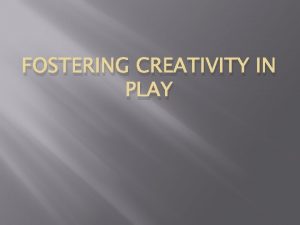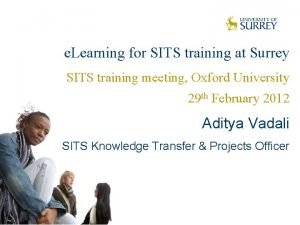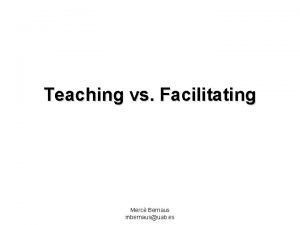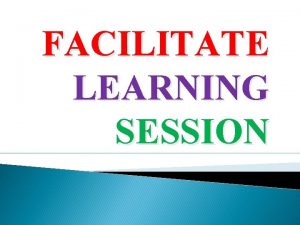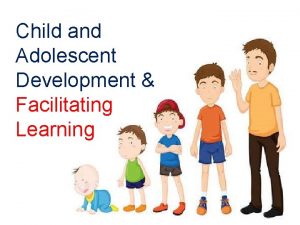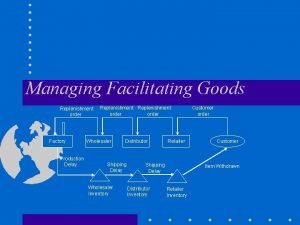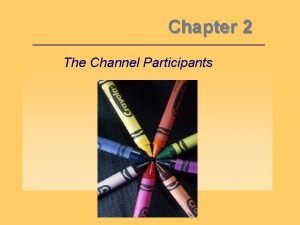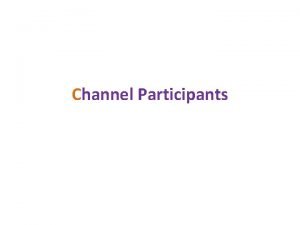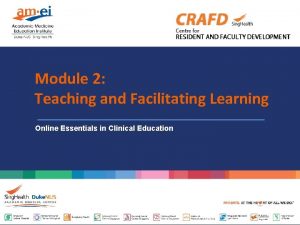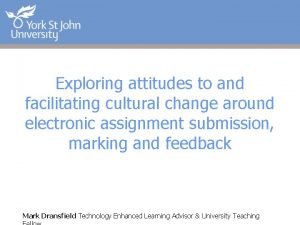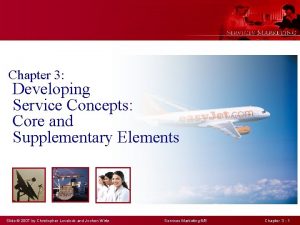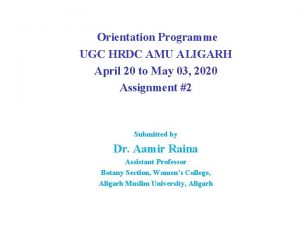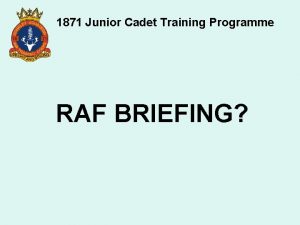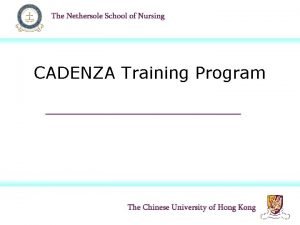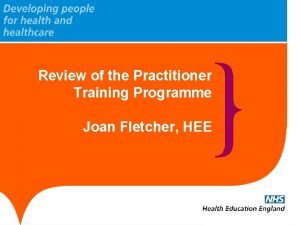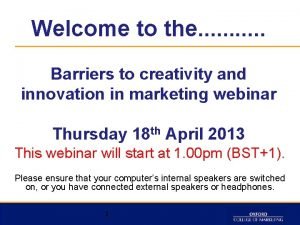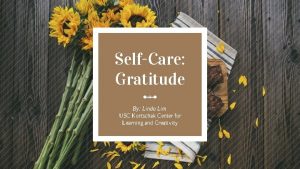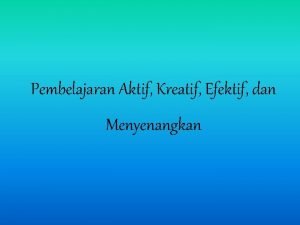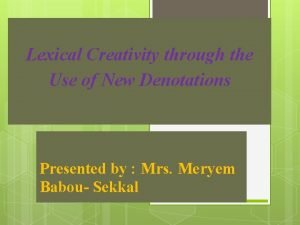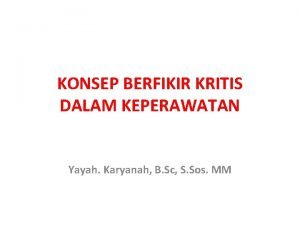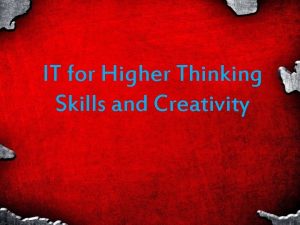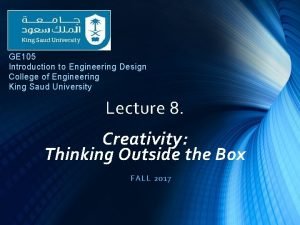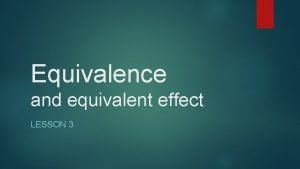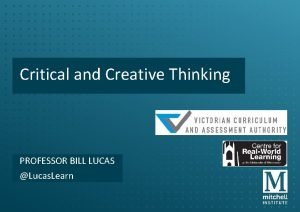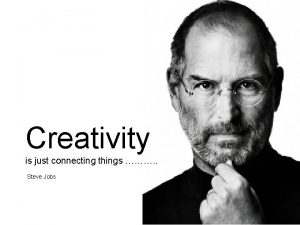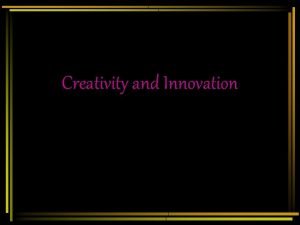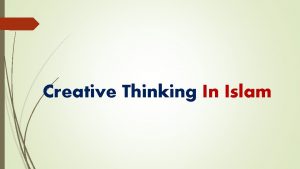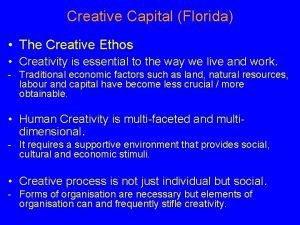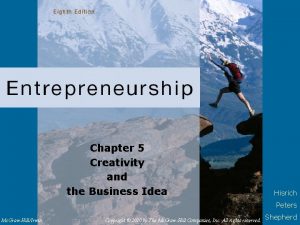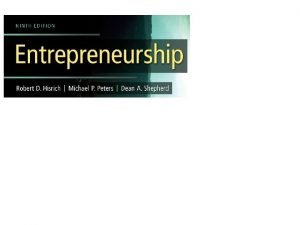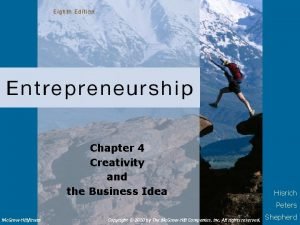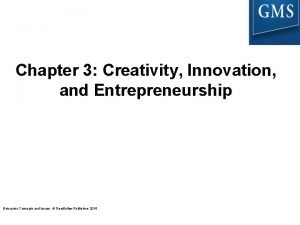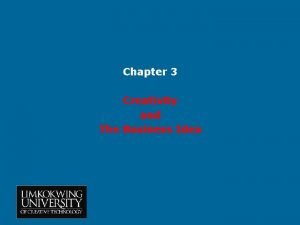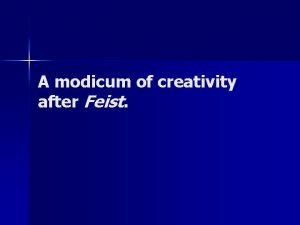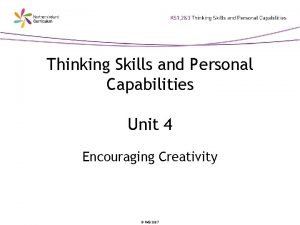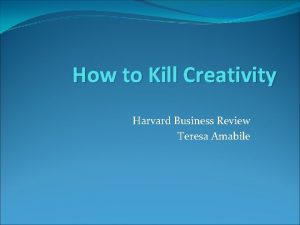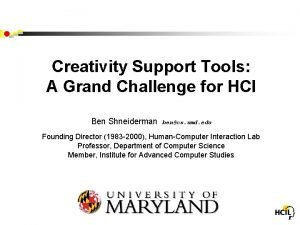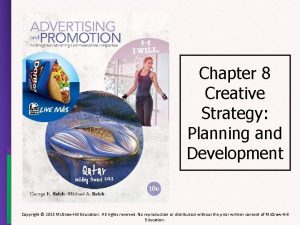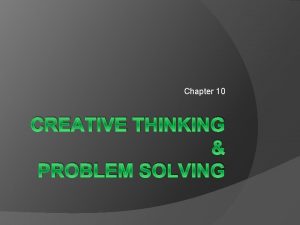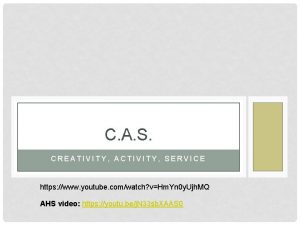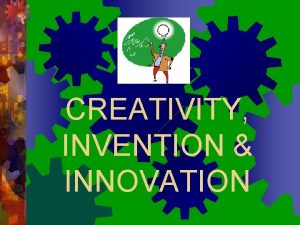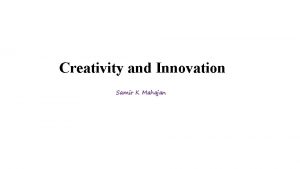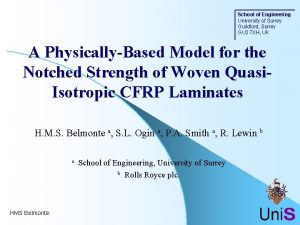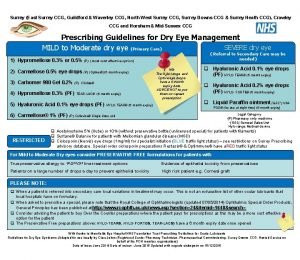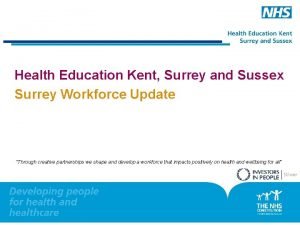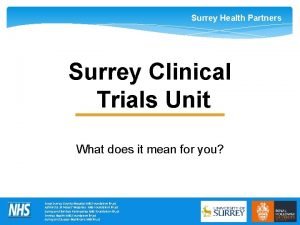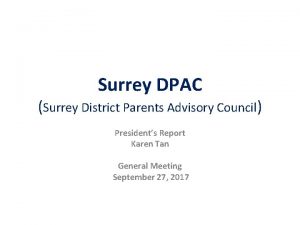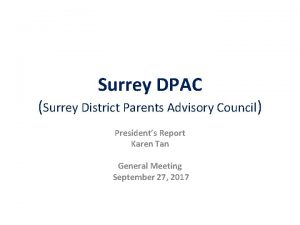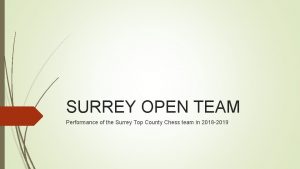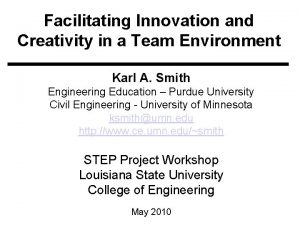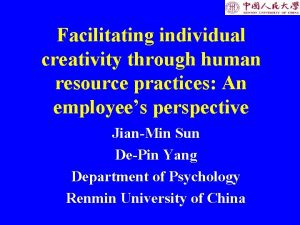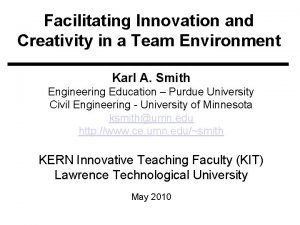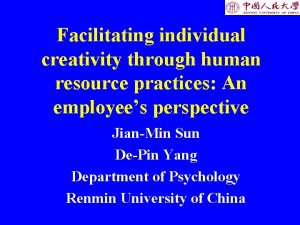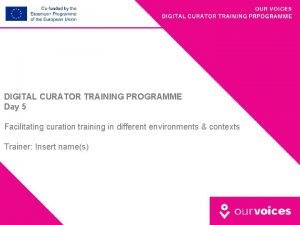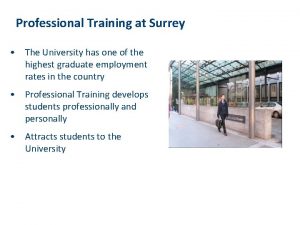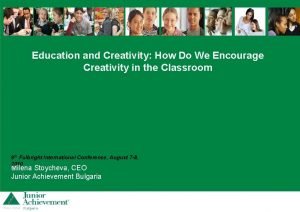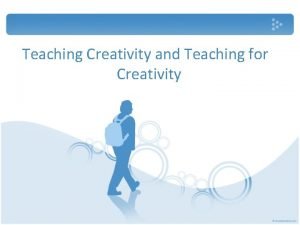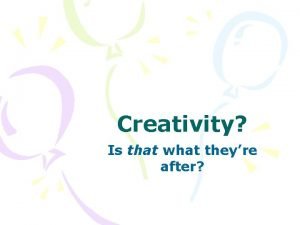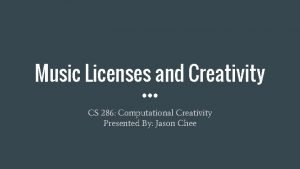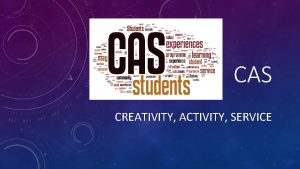University of Surrey Facilitating Creativity Training Programme Surrey












































- Slides: 44

University of Surrey Facilitating Creativity Training Programme Surrey Centre for Excellence in Professional Training and Education Creativity in higher education: what might it mean?

we claim to be developing students as ‘self-reliant, adaptable, creative and ethically aware individuals’ (Surrey Graduate Skills Statement). If higher education is about helping students to develop their potential as fully as possible, then helping students understand develop their unique creativities is an important and worthwhile goal

‘even where creativity was not taught, not considered teachable and not valued in assessment, it was still relevant in defining how the students saw themselves’ Oliver et al (2006).

Creativity in HE ‘problem’ proposition Not chronic, in the sense that the vast majority of teachers believe there is a problem to be solved, more a sense of dissatisfaction with a world that seems at best to take creativity for granted.

Holistic notions of learner development Knowing self SENSE OF BEING being self-aware, having a sense of identity and the confidence to engage with the world in a purposeful way. Being able to learn from experience to continually make sense of the way the world works and re-evaluate own understanding Sternberg and Lubart (1995) Capabilities for success ANALYTICAL: used to describe, investigate, analyse, evaluate, judge, compare and contrast. PRACTICAL: used to apply, utilise, implement, make and produce. CREATIVE: used to imagine, invent, enquire, discover, connect, synthesise, extend, adapt Ways of knowing • Know what • Know how • Know why • Know who • Know when Productive enquiry Knowing how to find out in order to do the things you need to do

What does being creative mean to you in your professional role?

Attitudes • Curiosity • Willing to engage and explore • Enthusiasm • Being proactive • Willing to take risks • Determination • Obsession Acting / doing • Doing new things • Problem solving • Connecting problem, ideas, process, needs and desires • Involves communication…. telling stories, selling ideas, persuading others • Making new/innovative things Ways of thinking • Having new ideas – original to self • Inspiring – energising ideas • Having an open mind • Thinking that is different to the norm - outside the box • Having ping moments Feelings • Its about expressing yourself • It feels personal to begin with but latter it might be something different • Feels exciting - ooooohhh but can be very uncomfortable • Feels great when it all comes together … the ping moment • You feel responsible for your actions Effects • Change • New ideas • New things • Innovation • Adapting old things to new situations • You are changed in the process Some things that academics associate with creativity in any context

Sharing perceptions of creativity To vote, press one of these buttons firmly Do not press this button or you will not be able to vote

Being creative is an essential part of my identity 1. 2. 3. 4. 5. Strongly agree Agree Don’t know Disagree Strongly disagree

Creativity is a rare gift which only a few people have 1. 2. 3. 4. 5. Strongly disagree Don’t know Agree Strongly agree

Some people are naturally more creative than others 1. 2. 3. 4. 5. Strongly agree Agree Don’t know Disagree Strongly disagree

It is possible for most people to develop their creativity if they are given the opportunity to do so 1. 2. 3. 4. 5. Strongly disagree Don’t know Agree Strongly agree Although some people have extreme levels of talent, everyone with normal human capacities is capable of producing creative work under the right conditions Terasa Amabile

video

Effective use of creativity is dependent on other factors such as personal agency and disposition e. g. Richard St John’s - passion/hard work/mastery /focus/push /serve/ideas/ persistence 1. 2. 3. 4. 5. Strongly disagree Don’t know Agree Strongly agree

REST OF LIFE CO-CURRICULUM PRAC TICUM ACADEMIC LI FE LONG LEARNING what is the ideal curriculum for learning for a complex world? LIFE WIDE LEARNING

A life wide curriculum offers more potential for students to develop and use their creativity than a curriculum that only utilises the academic programme 1. 2. 3. 4. 5. Strongly agree Agree Don’t know Disagree Strongly disagree

Learning about and learning to be John Seely Brown Learning about Learning to be Explicit dimensions of knowledge (Polanyi) Tacit

Learning for a complex world – the academic curriculum

The development of learners’ creativity is rarely an explicit outcome for an academic programme 1. 2. 3. 4. 5. Strongly agree Agree Don’t know Disagree Strongly disagree

In spite of this, there are plenty of opportunities for learners to be creative in their academic programmes 1. 2. 3. 4. 5. Strongly disagree Don’t know Agree Strongly agree

Learning about and learning to be John Seely Brown Learning to be involves: enculturation into the practices and ways of being, seeing and knowing in the field (serving an apprenticeship - becoming expert). Explicit Learning about It involves sensing what constitutes an interesting problem; knowing what constitutes an elegant or novel solution; being Tacit Learning to be able to engage in productive enquiry – deliberately seeking dimensions of what we need in order to do what we need/want to do (John knowledge (Polanyi) Seely Brown). It involves learning the epistemology of practice in any social practice domain (Raelin 2007 and Eraut 2005).

Raelin (2007) Epistemology of practice Developing expertise through a form of apprenticeship – by repeated practice in a domain and by acquiring skills across multiple contexts. Developing capacity for critical reflection – the re-thinking process that attempts to discover how what one did contributed to the results or effects of action. So how do students learn the epistemology of practice? ME learning to be a geologist: • finding a job where I could be a geologist ‘working in a tin mine’ • serving an apprenticeship with experienced people who instructed/guided/gave feedback • engaging in relevant work activity – mapping the mine and surface geology, logging drill core, preparing plans/reports • creating useful knowledge products which could be used to interpret geology • laboratory investigations at university • synthesising/presenting results in academic report

Learning for a complex world – the practice curriculum

The practice curriculum contains more opportunity for being creative than the academic curriculum 1. 2. 3. 4. 5. Strongly disagree Don’t know Agree Strongly agree

CO-CURRICULUM Cultural Academy A new approach to multicultural learning Norman Jackson, Vasso Vydelingum & Nimmi Hutnik WORKSHOP 1 Sharing perceptions of the meanings of culture through a concept map. Cultural diversity is a fact of life especially at the University of Surrey with over 3000 originating from over 130 different countries. A higher education that aspires to prepare students for the cultural complexities they will encounter in their professional and personal lives, must provide opportunity for learning through experiences of interacting and communicating with other cultures. WORKSHOP 2 A good way of enquiring into culture is to share beliefs by voting on propositions. Cultural gifts of food, music, art, poetry, language, symbols, clothes and images are an important part of the process of sharing cultures. Through a series of workshops, planning meetings and a conference, participants (students, facilitators and mentors) share their experiences and understandings of culture and its influences on their lives. SUPPORT FOR LEARNING • on-line social networking space to encourage sharing of experience • wiki to support the production and sharing of knowledge • mentoring scheme • new learning through experience award to value and recognise the learning LEARNING PRACTICES • conversations about culture • reflection on past experiences • concept mapping • cultural enquiry tools • proposition-testing using voting systems • story telling / digital story telling • peer ‘teaching’ • mentoring • student-led conference LEARNING THROUGH EXPERIENCE AWARD Students who complete the process and are able to articulate what they have learnt are entitled to receive the USSU Award. WORKSHOP 3 We need to be able to share our language and explore our understandings of culture in the organisations in which we work. Rituals & routines CONFERENCE A student organised conference to engage the wider community and encourage the university to see the benefits of this approach to multicultural learning. Control systems Stories & myths The Paradigm Organisation structures film making ‘Appreciating our multicultural campus Symbols Power structures

the rest of life is full of opportunity to be creative virtual gaming playing sport volunteering putting on a show being sociable travel looking after yourself part time work raising money

A life wide curriculum offers more potential for students to develop and use their creativity than a curriculum that only utilises the academic programme 1. 2. 3. 4. 5. Strongly disagree Don’t know Agree Strongly agree

A LIFE-WIDE CURRICULUM ACADEMIC&PRACTICUM 4 CO-CURRICULUM & LIFE CURRICULUM part-time employment within/outside university academic modules 3 12 month or 2 x 6 month placement 2 1 academic, professional and personal development modules Creative & Cultural Academies USSU evolution social enterprise scheme, + other USSU activities e. g. DAVE trainers organising events experiencebased enquiryrich modules starting/ running own business peer teaching & mentoring volunteering travel/gap years

But given that there are opportunities for learners to use and demonstrate their creativity, can we assess it?

Students’ creativity is assessed through explicit assessment criteria 1. 2. 3. 4. 5. Strongly agree Agree Don’t know Disagree Strongly disagree

Insufficient attention is given to students’ creativity: at best the evaluation of creativity is implicit 1. 2. 3. 4. 5. Strongly agree Agree Don’t know Disagree Strongly disagree

It is not possible to assess students’ creativity 1. 2. 3. 4. 5. Strongly agree Agree Don’t know Disagree Strongly disagree

I would assess students’ creativity but I don’t know how to do it 1. 2. 3. 4. 5. Strongly agree Agree Don’t know Disagree Strongly disagree

Assessment is often a major inhibitor of students’ creativity 1. 2. 3. 4. 5. Strongly agree Agree Don’t know Disagree Strongly disagree

Perhaps the role of the teacher is not to define creativity for students and assess them against what they think it is. Rather, it is to help students understand their own creativity and help them make claims with the evidence that they believe is appropriate 1. 2. 3. 4. 5. Strongly agree Agree Don’t know Disagree Strongly disagree

Cultural and social influences on creativity Csikszentmihayli (1999) Starting from a strictly individual perspective on creativity I was forced by the facts to adopt a view that encompasses the environment in which the individual operates. This environment has two salient aspects: a cultural, or symbolic, aspect which here is called the domain; and a social aspect called the field. Creativity is a process that can be observed only at the intersection where individuals, domains and fields interact.

What do benchmark statements tell us about creativity in undergraduate education? Jackson & Shaw (2006) analytical tool developed using the categories of: @ imagination and originality @ thinking abilities (particularly combining analytical rational thinking with divergent and associative thinking) @ capacity to generate/evaluate ideas @ activities aimed at doing or producing something from the ideas generated

number of indicators (max 18) referred to in subject benchmark statements A&D Eng Soc. W Arch DDP Nurs 13 9 9 8 8 8 EES Med Bios B&M Chem E 7 7 6 6 Hist LRS Math Tour Geog Ed Acc 6 6 5 4 4 4 3

Things people associate with creativity in seven disciplinary fields T U O AND H Being imaginative – ability to think generatively Being original / inventive Being able to adapt and improvise Being curious with a continuously enquiring disposition Being resourceful Being able to think synthetically and to connect ideas/things in unusual ways Being able to think critically and analytically Being able to communicate in ways that help people comprehend and if necessary, see things differently

These abilities, qualities and attitudes are important to being creative in my field • • • Strongly agree Agree Don’t know Disagree Strongly Disagree

Teaching is a highly complex activity-it needs both the appliance of science and the exercise of humanistic imagination; it demands scholarship, rigorous critical enquiry, the collection of secure educational knowledge on the one hand it requires insight, inspiration, improvisation, moral sensibility and a feel for beauty on the other (Saunders 2004)

Creativity is important to my identity and practice as a higher education teacher or other professional role 1. 2. 3. 4. 5. Strongly disagree Don’t know Agree Strongly agree Creativity is integral to the identity of most NTFs: 91 out of 94

Appreciative story telling 10 mins Paired conversation Think of a time when you have tried to promote students creativity or when your creativity has been stimulated. Tell your partner your story then considering both stories try to make a proposition about the way creativity is promoted. Write this on a giant post-it.

How do we give more encouragement to the creative development of learners? Encourage holistic notions of learner development and take account of the whole learning experience: acknowledge that students are creative in their lives outside their programme and include rich experiences in their portfolio of learning activity Encourage learners to think creatively and nurture curiosity and e productive enquiry - enquiry-rich curriculum Encourage activities that involve designing, inventing, producing or adapting/transferring things – ie adopt a more experience-based approach Use an outcomes model that values the process and products of invention and the unexpected outcomes that emerge: rewarding those that try but don’t succeed. Teachers model the creative behaviours that they value and respect learner conceptions of their own creativity
 Creativity and play fostering creativity
Creativity and play fostering creativity Surrey sits
Surrey sits Teaching vs facilitating
Teaching vs facilitating Benchwork area
Benchwork area Scaffold and fade-away technique
Scaffold and fade-away technique Facilitating goods examples
Facilitating goods examples Merchant wholesalers
Merchant wholesalers What is channel participants
What is channel participants Facilitating agencies in marketing channel
Facilitating agencies in marketing channel Facilitating learning module 2
Facilitating learning module 2 Factors that positively influence communication
Factors that positively influence communication Facilitating cultural change
Facilitating cultural change Core product and supplementary services
Core product and supplementary services Aligarh university hrdc
Aligarh university hrdc Raf training programme
Raf training programme Cadenza training programme
Cadenza training programme Practitioner training programme
Practitioner training programme Barriers to creativity
Barriers to creativity Usc kortschak center for learning and creativity
Usc kortschak center for learning and creativity Rule governed creativity
Rule governed creativity Lexical creativity
Lexical creativity Berpikir kritis dalam keperawatan
Berpikir kritis dalam keperawatan Guided hypermedia projects
Guided hypermedia projects Creativity innovation and invention
Creativity innovation and invention Formal equivalence vs. dynamic equivalence ni eugene nida
Formal equivalence vs. dynamic equivalence ni eugene nida Critical and creative thinking capability
Critical and creative thinking capability Creativity is just connecting things
Creativity is just connecting things Creativity innovation and invention
Creativity innovation and invention Creativity and innovation
Creativity and innovation Creative thinking in islam
Creative thinking in islam Creative ethos
Creative ethos Pritchon is a business idea sourced from
Pritchon is a business idea sourced from Chapter 4 creativity and the business idea
Chapter 4 creativity and the business idea Barriers to creativity
Barriers to creativity Creativity and innovation
Creativity and innovation Creativity business idea
Creativity business idea Define modicum
Define modicum Icedip model of creative thinking
Icedip model of creative thinking Harvard business review creativity
Harvard business review creativity Creativity support tools
Creativity support tools Creativity of linguistic knowledge
Creativity of linguistic knowledge Creativity creative acrostic poem
Creativity creative acrostic poem Creative strategy development
Creative strategy development Creativity techniques
Creativity techniques Cas creativity ideas
Cas creativity ideas
